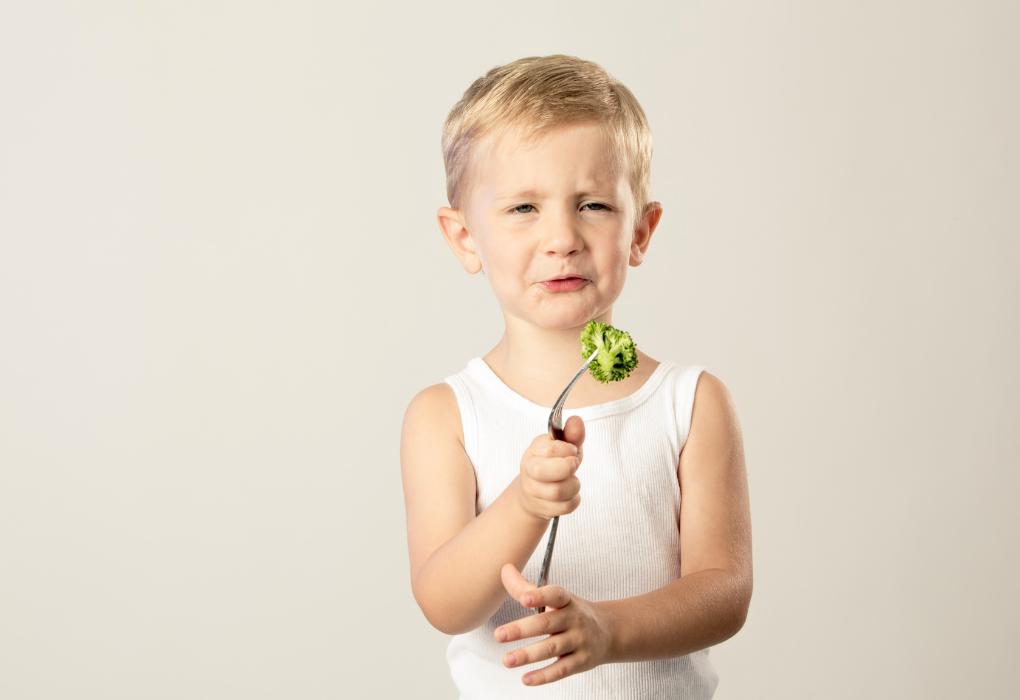How many different strategies have you tried to help prevent and improve picky eating? We lost count. It’s common to hear anecdotes about once voracious and varied baby eaters turning into highly selective, demanding toddler eaters. Many parents even associate it with children turning two years old. In my experience as a pediatric dietitian, I observe that the peak range is between 1-3 years old.
This coincides with children seeking independence and autonomy, which is appropriate developmentally. However, as children pull back, reject foods they once ate, and voice preferences, it’s natural that parents begin to worry. This fear manifests as trying to cajole children into eating by asking them to try something repeatedly, bribing, excessive praise, and frustration/stress around the table. These behaviors, while well-intentioned, cause the children to feel pressure around food and eating. Pressure is a huge factor contributing to picky eating. This often creates a vicious cycle as pressure leads to more food rejection leading to increased pressure to eat.
Additionally, toddlers, more aware of their surroundings, exhibit more hesitancy around food than babies do. This hesitancy can often be overcome with many exposures (20+ for a toddler) to foods, but without that knowledge, hesitancy can be categorized as dislike for certain foods. As those “disliked” foods are not offered again, children aren’t able to gain the confidence to eat them. Picky eating can make mealtimes feel extremely stressful for families. Here are some tips to cope with this phase:
- Please know that you can’t make your child eat. All you can do is offer a variety of healthy options – taking your child’s preferences into account and also continuing exposure to new or disliked foods.
- Know that your job as a parent is to offer these foods. And it’s your child’s job to decide how much (or how little) of it to eat. You’re a great parent even if your child is a picky eater.
- Recognize that it is frustrating! And it makes sense that it’s frustrating.
- Change is always possible. It won’t stay like this forever, and if you are looking for change, there are research-proven strategies that help reduce picky eating such as these resources: short order cooking, food pairing, involvement in the preparation and cooking process, parental modeling, trying new foods, and taking the pressure off.



